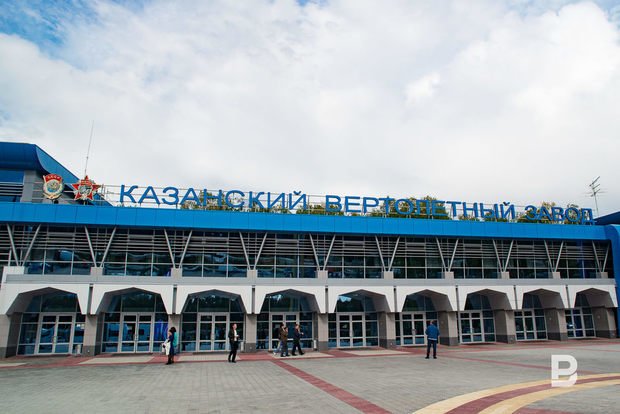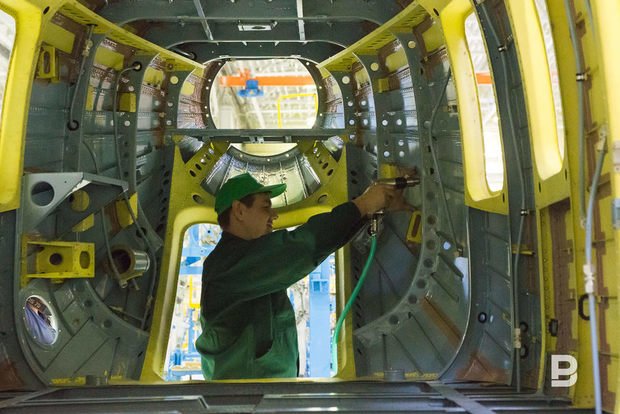Ansat in Celestial Kingdom: China to make test purchase of Kazan helicopter
Russian Helicopters expect to sell the first five helicopters of Kazan Helicopters
Tatarstan President Rustam Minnikhanov is paying a visit to China these days. At the same time, Realnoe Vremya found out the first five civil Ansat helicopters made by Kazan Helicopters might fly to the Celestial Kingdom in the short run. The Federal Air Transport Agency (Rosaviation) is finishing the certification of Ansat to comply requirements of PRC aviation authorities. Realnoe Vremya knew that its Russian certificate could be validated in China on 30 June or in early July. It will open the road of Ansat to the sky of the Celestial Kingdom where Airbus Helicopters have been reigning for a long time. The cost of the test supply can amount to $50 million, while the contract itself will become the first export for Kazan Helicopters this year. But this doesn't save Kazan Helicopters from the production crisis caused by lasting negotiations around a $1bn Indian contract.
Ansat for China
This year Russian Helicopters (RH) have prepared to take a renewed version of lightweight Ansat helicopter designed by Kazan Helicopters' constructors as early as 1999 (that's to say, long before the enterprise joined RH state holding) to China. Despite its 20-year-old age, Ansat is still a newcomer in the Russian helicopter market and simply unknown abroad. Nevertheless, Ansat was the only Russian lightweight helicopter with a weight of up to 3,5 tonnes that can be exported to Southeast Asia and China. But the Russian certificate for Ansat, which it got in 2003, hasn't still been validated (that's to say, certified according to another country's aviation requirements) to be exported to no country of the world except South Korea.
Only this year Russian Helicopters and Kazan Helicopters (KH) have launched the process of validation of Ansat's civil version to comply with aviation requirements of PRC. As Deputy Director of the Administration of the Federal Air Transport Agency Denis Pridannikov said to Realnoe Vremya, the application for the certification was submitted as early as spring 2017. But the work on validation began later, in fact. ''The first meeting of Rosaviation and KH with representatives of the Shenyang Aircraft Airworthiness Certification Center of CAAC (PRC) was in January. So Ansat has been in the process of certification tests for just six months. It's little time. There is not a major difference between aviation requirements for helicopters of PRC and Russia. In general, this will allow to carry out and finish the validation quite fast,'' he thinks.

China decided to fly with one produced engine
It's interesting that certification flights took place not in China, what one could presuppose, but directly in the launch base of the producer – Kazan Helicopters. ''Chinese flew in Kazan. KH provided two helicopters to them. One of them was a VIP version, so that test pilots would get used to the ergonomics, study the control panel and acquaint themselves with the machine, in general,'' Deputy Director of the Administration of Rosaviation Denis Pridannikov told.
According to him, despite expectations, Kazan permitted China to do different risky experiments with Ansat. ''When we go to validate and chip European equipment, our pilots are very limited to the flight regimes they can perform, according to safety rules. Here, what I was surprised at, Kazan Helicopters allowed to perform a combat landing with one engine,'' Pridannikov didn't hide the surprise at the bravery of officials of KH. But he found justification because not ordinary pilots but professional test pilots of the Shenyang Aircraft Airworthiness Certification Center of CAAC were at the wheel. Flight tests took place at KH in late April for several days.
Ansat went through tests with PW 206 gas turbine engine made by Pratt&Whitney (USA). It means they must be equipped with them if exported. Won't American sanctions impede? According to Denis Pridannikov, the restrictions on supply of foreign engines and components don't affect civil aviation equipment. Ansat's civil version will be supplied.
At a briefing after the flight, the Chinese pilots positively estimated Ansat's performance. ''I expect this will play a positive role in meeting scheduled deadlines of Ansat's validation. The performance will be evaluated by the end, it needs to be created. It's impossible to do right after flights end. It's an integrated work. The certification process of Ansat to be exported to China will end by 30 June or early July,'' he resumed.

Revenge of Kazan helicopter producers
The approval of Chinese aviation authorities will open the road to the signing of the first export contract to supply Ansat. And United Helicopters from China can become its first purchaser. It should be reminded that RH agreed with it to supply 10 Russian helicopters, five of which are medical versions of Ansat helicopter, in MAKS-2017 International Aviation and Space Salon. It seems that China didn't change its plans. According to the sources close to KH, there were negotiations to increase the test lot. At the moment, China is ready for the five helicopters. Experts estimate the contract can cost $50 million. Senior Research Fellow of the Zhukovsky Academy Evgeny Matveyev notes that the lightweight helicopter can cost $10m each, if we calculate a kg of the helicopter's weight, which rose to $2,5. But while entering the market, Russian Helicopters can give bonuses to the first purchasers, he says.
Kazan Helicopters will finally enter the unlimited market of China with the lightweight helicopter. It wasn't allowed to ''enter'' for a long time. KH had to give a $200m Chinese contract in favour of Ulan-Ude Aviation Factory in the mid-2000s, at the height of a competition of rivals. It's when Russian managed to build service infrastructure in China to maintain aviation equipment, which is expected to be used when launching Ansat to China. ''RH has the power and money to provide these five helicopters. We've already been there. It's a normal practice when the first test lot isn't big, though I know a bigger number of helicopters is presupposed,'' comments the deputy director of the administration of Rosaviation. ''It's not always linked with a will or unwillingness of the client. A big purchase will require costs to train the personnel – not all companies can afford to teach 100 pilots. Training of the crew is a long process. We also receive foreign equipment by small lots because we need to prepare infrastructure and train the pilots.''
What real chances does Ansat have to remain in China? Here independent experts are unanimous. Airbus Helicopters has been dominating in the sky of the Celestial Kingdom for long. It's impossible to drive it out, but one can find a niche. ''It's impossible to substitute it. They've reached a very high level. It takes time and money to climb there. But it has its own niche, anyway. But everything depends on how RH will behave. If it proves it's a careful supplier, it will be possible to expand. But it's a slow and long process. And China itself is buying everything. They are interested in having different types of aviation equipment. We will add officials of KH think the potential of Ansat in China is 70 helicopters,'' says Realnoe Vremya's source.